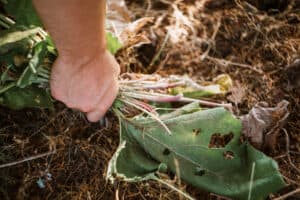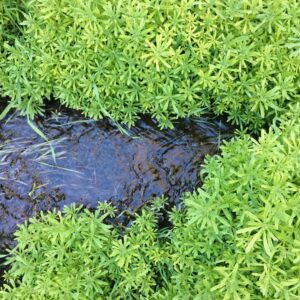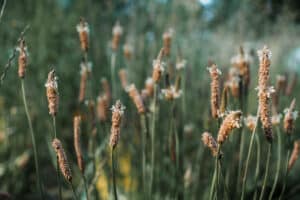Table of Contents
How can herbalists use plant medicine to support children who have, in conventional medicine, been diagnosed with ADD or ADHD?
Unfortunately, there can be some detrimental effects, not only from the conventional treatments but also from the psychological and emotional experience of the label itself.
Thankfully, we have remedies that can address some of these dynamics, which not only helps us navigate our standard educational system (which isn’t always suitable to all learning types) but also help keep our children off stronger medications. In today’s post we’ll be discussing:
- Problems with Conventional Treatment
- Vata vs Kapha cognitive challenges
- Herbal Treatments
- Looking to the Heart
Problems with Conventional Treatment
It’s unfortunate when doctors are so quick to say that a child has a disorder because they have a hard time paying attention in our linear, reductionistic, boxed-in educational system. As I’m sure most of you are aware, we are learning that there are really few children who can actually learn in this form. It’s unfortunate because society creates a box and says; “this is how you’re going to learn, and if you don’t learn it our way, then you have ADD or ADHD, and here’s some Ritalin”.
We need to recognize and understand that every child learns in different ways, some being very hands-on and tactile, some more visual, and some more auditory learners. We can’t just throw all our children into one box, and expect that they’re all going to choose the same path – it’s just not functional nor fair.
Over many years, I watched a few close friends and family members take Ritalin. Through this experience, I witnessed how long it took them to overcome some implications that medication had caused physically, psychologically, and even emotionally! It was devastating because their “condition” didn’t seem worthy of such a treatment, and they should have had access to other learning styles.
So if it’s possible, I think that we should encourage and offer our children the opportunity to learn differently, and show them that there isn’t anything wrong with them, but get them to understand that our generic educational systems are unfortunately super limited, and hope these issues in the system will be addressed as we become more educated around these issues.

Vata vs Kapha cognitive challenges
Attention deficit disorder, or ADD——and attention deficit hyperactive disorder, ADHD——indicate a hard time concentrating and focusing. When I think outside of the dominion of ADD and ADHD, just thinking of cognitive difficulty in general, I tend to think of it in a couple of different categories.
First, perhaps the person can’t concentrate because they’re just really spaced out. Their mind is in a constant state of “whoa, I can’t focus on one thing”, they get really distracted easily. They’re the butterflies chasers; “I love that color! I used to have a T-shirt that was that color, I wonder where that shirt is? I’m going to go look for it.” And the next thing you know, they’re cleaning their kitchen. This state of mind is extremely scattered, and I would describe this from the Ayurvedic perspective as the Vata cognitive challenge.
The other type of mental state is the groggy, foggy, hazy, trying to see through cotton balls—that type of really intense brain fog that weighs over your eyes. It’s not so much distraction or spaced out like the vata cognitive challenge, but it’s more a mental sluggishness and fatigue. I would put this in the Kaphic cognitive challenge.

Herbal Treatments
So for the folks that are really spaced out and scattered/all over the place, they are going to benefit from gentle nervines; remedies like Lemon Balm (Melissa officinalis), Tulsi (Ocimum tenuiflorum), Passionflower (Passiflora incarnata) and Skullcap (Scutellaria lateriflora) which will calm the mind and calm the nervous system down enough that the person or child can actually have the bandwidth to focus on one thing for a short time. Obviously you don’t want to relax them too much to the point where they’re tired and can’t focus, but just enough so they can feel centered and be productive.
For the Kapic State, we need remedies to stimulate the mind and blood flow to the brain, so here we can want to use circulatory stimulants. Rosemary (Rosemarinus officinalis) is excellent. Gingko (Ginkgo biloba) is excellent. It is thinning the blood. It’s not so much driving blood, but it’s thinning it. Bacopa (Bacopa monnieri) is excellent here as well. We also have Valerian (Valeriana officinalis), which is a cerebral stimulant. Valerian is bringing more blood flow up into the brain, but obviously, it’s also quite distinctly sedative, so we usually have to be cautious with Valerian. And then on the nervine side, I like the more gentle nervines, especially if we’re working with children. Here, things like lavender (Lavendula spp.) and Lemon Balm (Melissa officinalis). Tulsi (Ocimum tenuiflorum) can be really nice. Linden blossom or Tilia (Tilia spp.) is nice here as well.
Gotu Kola (Centella asiatica) is also excellent. It’s probably my favorite herb: very safe for children, mild but powerful, safe for kids but very noticeable. I like Gotu Kola because it has a gentle nervine effect and also procures clarity within the mind. Gotu Kola gently calms the nervous system down, but it also promotes an alert awareness that’s also peaceful and calm, which is the most optimal state of consciousness for any type of mental focusing, studying, thinking, but also spiritual practice—mindfulness and meditation and things like that. Gotu Kola is classically paired with Calamus root (Acorus calamus), which is great for the foggy, dull type of difficult Kapha cognition.

Looking to the Heart
From an energetic standpoint, working with the heart is excellent here as well because it alludes to a sign of mental overactivity, so the more that we can bring someone down into the heart, we bring them into more of a parasympathetic state. We bring them into more of a settled, singular, focused state of consciousness rather than a very stimulated, all-over-the-place state of consciousness. Linden (Tilia spp.) is excellent here. Motherwort (Leonurus cardiaca) can be good there and Lemon balm (Melissa officinalis) again is great here. I’ve also heard Hawthorn berry and flower (Crataegus spp.) can be excellent for folks.
So those are some thoughts I would suggest around how to look at ADD and ADHD, as well as some remedies to support each state. Another aspect that I would consider is to see if there are any food intolerances that might be present. If someone’s eating an intolerant food and it’s stimulating their immune system and a systemic inflammatory response, it’s going to be stimulating cortisol secretions too, which can be stimulating. So that could be contributing to the “H” part in the ADHD. One of the main complaints of folks with food intolerance is mental fatigue: difficulty concentrating, difficulty focusing, and grounding. So that could be a contributing factor, and it’s worth looking into and screening for.
I hope this post has given you a couple of new tools to consider when working with children who have a harder time concentrating due to these hyper mental states, and helps to find another perspective using the wonderful tool of herbal medicine.







